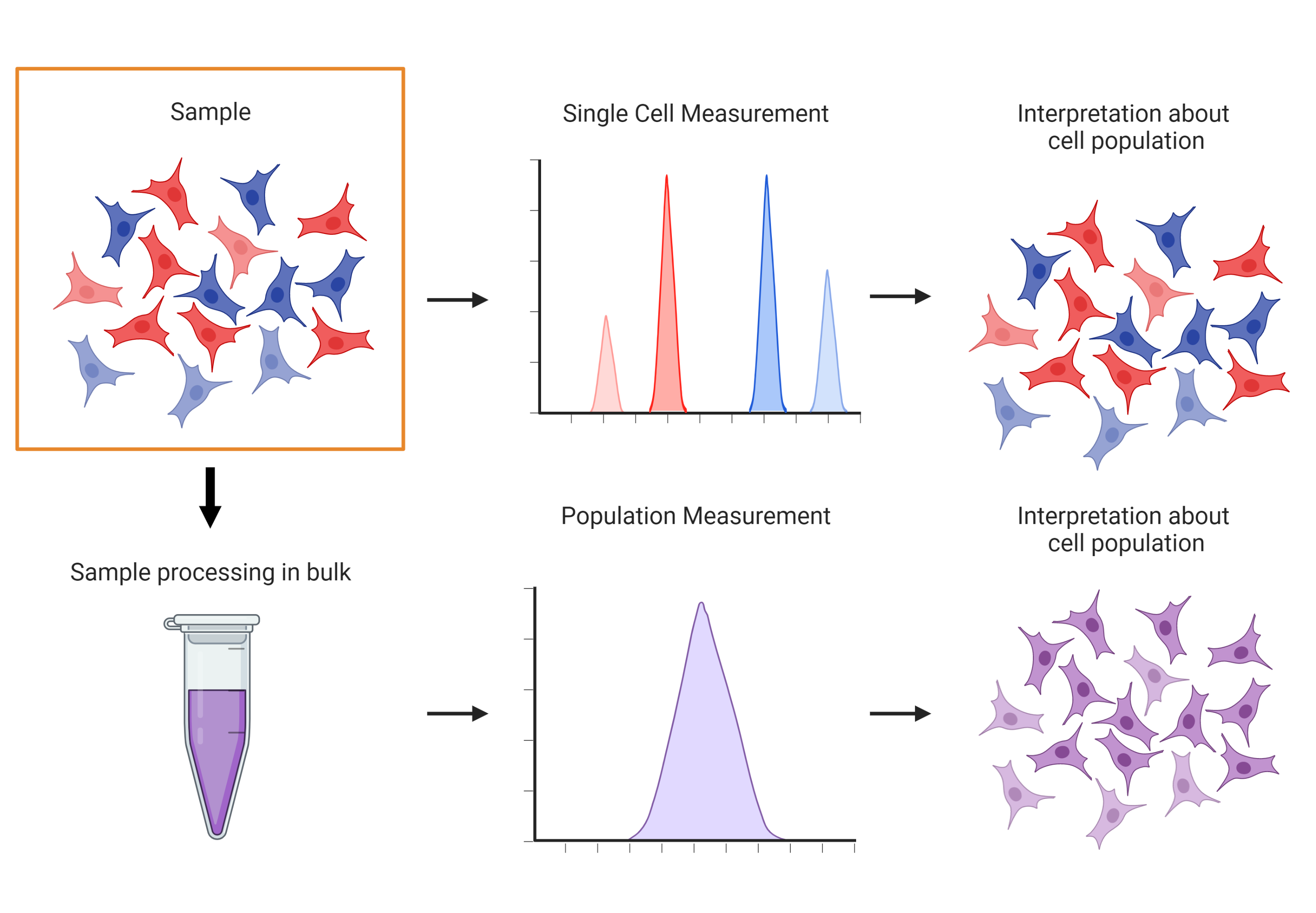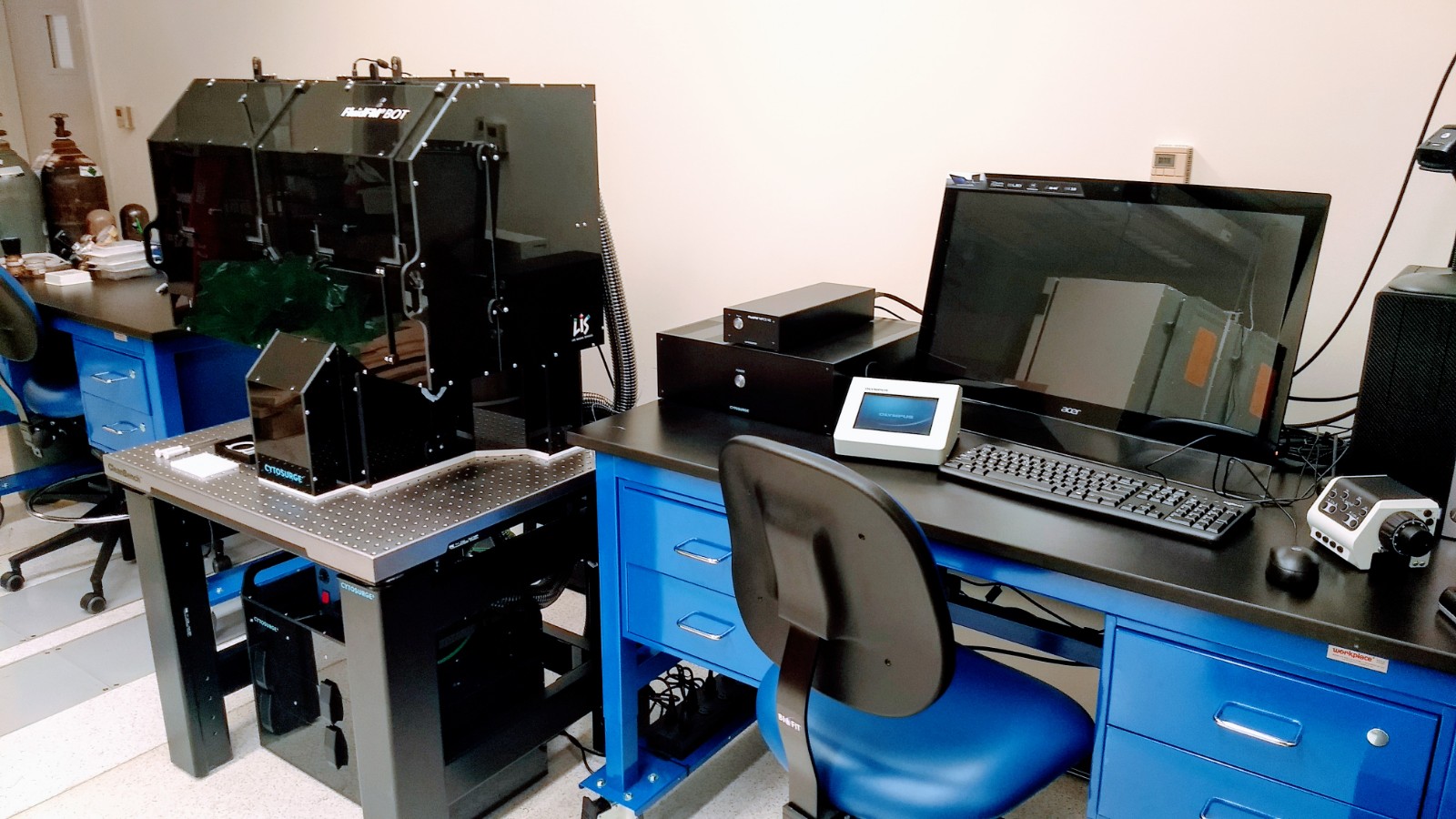Summary
Control over engineering and measuring single cells is an emerging capability of value to increase measurement confidence in the sectors of engineering biology, regenerative medicine, genome editing, and gene therapy. This includes the ability to have precision control in depositing engineering molecules into individual cells, and/or the ability to measure individual cells within a population. NIST is developing approaches for measurement assurance around technologies for single-cell manipulation and measurement. These efforts are in addition to NIST Programs in Flow Cytometry and Engineering Biology.
Description
Mammalian cells are an important source material for applications in regenerative medicine, gene therapy, engineering biology, and genome editing.
Traditional tools for manipulating mammalian cells operate at a bulk cell population level without precision manipulation of individual cells. Traditional genomic analysis of manipulated or unmanipulated mammalian cells is also performed in bulk yielding a population-averaged measurement. Such methods have already allowed for great strides in biological understanding and have provided a path for human therapeutics development. Detecting the heterogeneity among individual cells with a cell population can yield a different interpretation of a cell population as compared to the population average measurements. In addition, populations may shift over time in ways that may not be detectable in a population measurement.

Single-cell manipulation and measurement technologies are of interest for product development applications that require control of dose delivery or high-resolution data on the distribution of genomic and phenotypic outcomes of individual cells in a population. NIST has built capabilities and collaborations towards measurement assurance for this technology sector.
NIST Single-Cell Manipulation Capability

Fluid Force Microscopy (FluidFM) is an emerging cell-manipulation technology that uses atomic force microscopy (AFM) principles to guide a microfluidic probe. This enables automated and controlled interactions with a sample of interest. Capabilities of FluidFM relevant to regenerative medicine, engineering biology and genome editing applications include: single-cell injection, single-cell isolation, force adhesion measurements, and intracellular sampling of live cells in a non-destructive manner for multi-omics analysis. NIST acquired a commercial instrument based on this technology, the ‘FluidFM OMNIUM’ (Cytosurge AG), and is collaborating with Cytosurge AG on measurements.
Genome Editing Use Case
One way to manipulate mammalian cells is through genome editing, a class of biotechnologies that introduces site-specific modifications into DNA. In order to introduce genome editing biomolecules into cells, one must use a reagent delivery method that could either manipulate cells in bulk or at the single-cell level. NIST is currently utilizing the FluidFM OMNIUM technology for single-cell genome editing and other regenerative medicine applications.
NIST Single-Cell Measurement Capability
Technologies are emerging for single-cell genomic and multi-omics measurements. NIST is currently collaborating on single-cell targeted sequencing (Mission Bio) and single cell whole genome and whole transcriptome sequencing (BioSkryb Genomics).
Publications
Maragh S. “Empowering Genome Editing through Standards.” Frontiers of Engineering: Reports on Leading-Edge Engineering from the 2019 Symposium, The National Academies Press, 2020, pp. 37-41. https://doi.org/10.17226/25620.
Patange S, Miller SD, Maragh S (2023). Variability in genome-engineering source materials: consider your starting point. Synthetic Biology 8(1), https://doi.org/10.1093/synbio/ysad003
Patange S, Maragh S (2022). Fire Burn and Cauldron Bubble: What Is in Your Genome Editing Brew? ACS Biochemistry, Article ASAP. https://doi.org/10.1021/acs.biochem.2c00431
DISCLAIMER
Any mention of commercial products within NIST web pages is for information only; it does not imply recommendation or endorsement by NIST.

